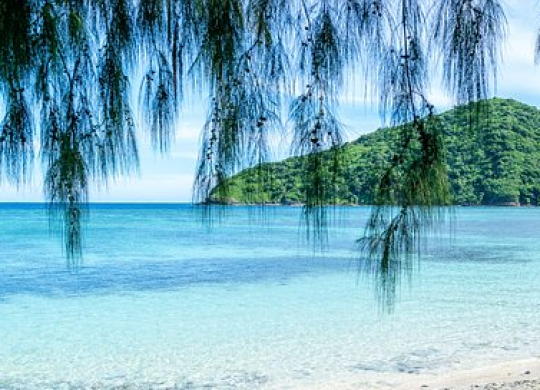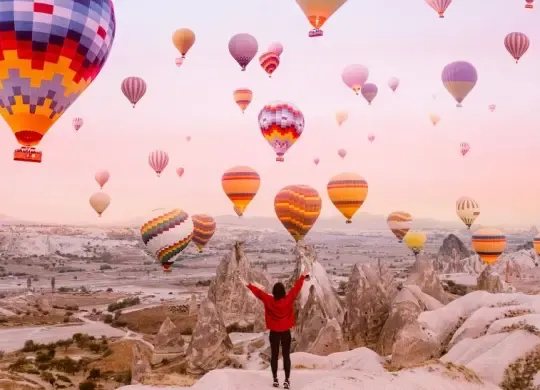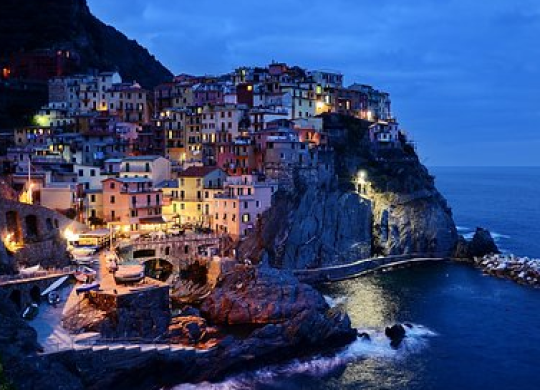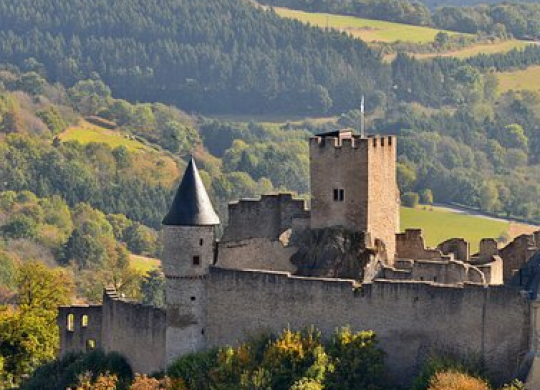Tourism in Fiji: amazing places for experienced tourists and entry rules
Table of contents

Although Fiji is familiar to everybody for a long time, it is difficult to call them a popular tourist destination. Vacationers are attracted by white sandy beaches, azure lagoons, and untouched nature. But the remoteness of the islands, insufficient information about them, and some local traditions do not allow the archipelago to become a tourist mecca, like the Maldives or the Bahamas.
Let's meet Fiji
If you ask the average person about Fiji, the answer will be that it is a tropical island somewhere far out in the sea. This tiny country really lies in a rather remote part of the Pacific Ocean. But this is not one island: the state includes 333 islands, only about a hundred of which are actually inhabited. The largest of them is Viti Levu, which holds ¾ of the population, the three largest cities (including the capital — Suva), and the highest point of the state — Mount Tomanivi.
Fun fact: locals call their homeland "Viti", and neighbors from the islands of Tonga — "Fisi". The "Fiji” option belongs to the famous traveler James Cook. Rumor has it that no one dared to deny the authority of the great sailor and to point out his mistake. Therefore, the new lands were presented to the Old World under the name we use today.
Tourism in Fiji
As developed infrastructure, including asphalt roads and cars available on the islands of Viti Levu and Vanua Levu only, they would be the most comfortable for tourists. In addition, the largest islands of the archipelago contain many interesting objects for travelers and resorts for fans of beach holidays.
Let's start with the main island of Fiji: there is a lot to see.
Most international flights land at Nadi airport. Therefore, trips to Fiji usually begin with visits to its main attractions — the Hindu Temple of Sri Shiva Subramanya the highest one in the southern hemisphere, the Nadi Handicraft Market, the Fiji Culture Village, and the Garden of the Sleeping Giant, which is considered to be the main tourist attraction at Viti Levu.
Note: The Garden of the Sleeping Giant is part of the Koroyanitu National Heritage Park, which has the Mount of Koroyanitu, (which actually bears the nickname Sleeping Giant), 6 ethno-settlements, many hiking routes and infrastructure for eco-tourism.
The park itself has a 25-hectare orchid garden, canopy-covered walkways between rainforests, waterfalls, and lily ponds, and also manicured lawns for fun leisure. There is a resort town of Sabeto nearby, famous for its mud pool and healing hot springs.
The capital city of Suva is on the other side of the island. Its main sightseeings are Colo-i-Suva reserve park and the exhibition of historical and archaeological exhibits in the Fiji Museum, which is considered the richest and largest among all the islands of Oceania. In addition, guests of the capital should see the church of St. Francis Xavier High and the Parliament building.
Along with the above-mentioned places, guests of the Viti Levu island should visit:
- Sigatoka Sand Dunes National Park is a unique place at the mouth of the Sigatoka River by the town of the same name. The first protected area in Fiji offers two hiking routes, which offer incredible scenery, along with an archaeological curiosities view.
- The Kula Wild Adventure Park — a place where one can take a walk while observing representatives of the Fijian flora and fauna up close, or race on a zipline suspended in the heart of the rainforest.
- Dravuni Island, where people preserve ancient traditions and the ways of their ancestors.
- Orchid Island with a garden of exotic flowers and the cultural center of Fiji.
Outside the main island of the archipelago, travelers should see:
- The island of Vanua Levu with its Rainbow Reef, Nakawaga Falls, Savusavu Hot Springs, J. Hunter's Pearl Farm, Vaishali Nature Reserve, and the unique Marine Park, which aims to preserve Fiji's oceanic flora and fauna, which is being destroyed by numerous resorts.
- Lovoni village is located in the crater of the volcano and the waterfalls nearby it. This incredibly beautiful place can be found at the Ovalau. During a visit to the island, one should also see its main city (and the former capital of Fiji) — Levuka.
- Taveuni Island, is actually a shield volcano. Here, tourists are awaited by Boumi waterfalls that belong to the natural park of the same name, the black rocks of the Southern Cape, the geysers of the Matamaiqi blowhole, rapid rivers surrounded by volcanic canyons, as well as the Rainbow Coral Reef. And the most important thing is the international date line, on the sides of which the time difference will be 24 hours.
- Sava-i-Lau caves, carved in the coastline of Yasava with wind and waves, are worth attention not only because they were the set of the "Blue Lagoon'' movie starring Brooke Shields. Via underground flooded tunnels, one can get to the cave where a big statue of the local deity Ulutini is erected.
- Important: access to the caves depends on the level of the tide and other features of the local nature, so the guide's supervision is a guarantee of safety.
- Beka Island, where local inhabitants still practice walking on hot coals. Additionally, there is a famous lagoon, where everyone can go swimming with sharks.
- Astrolabe Coral Reef, which is the fourth longest in the world. This natural wonder is located on Kadavu
- Cloudbreak reef on the island of Mamanuka is considered one of the best places for professional surfing.
Along with a great beach vacation, tourism in Fiji includes opportunities for hiking, snorkeling, diving and scuba diving, kayaking, rafting, surfing, fishing, and other active or extreme leisure activities
Climate
The tropical oceanic climate prevailing on the archipelago is known for its mildness. From November to April, there is a rainy season, during which powerful cyclones, storms, landslides, and floods often occur (the most dangerous period is from January to February). The high season here is from May to November.
Tourist FYI
The highlight and main feature of Fiji is the cultural feature of the local residents. The issue is that cannibalism was practiced here until the beginning of the 20th century. And even now one can find old people who will nostalgically muse that they still remember the taste of real meat and not the European junk like chicken or goat. In addition, this topic is mercilessly exploited in many ethnic villages, while guides used to savor it too. Therefore, especially vulnerable people should think twice about visiting the archipelago, and everyone else should be ready for "spicy" details and a specific experience of meeting this aspect of Fijian culture.
It is also necessary to be aware of the rather high tension between the Polynesian and Indian ethnic groups of the Fiji population. This is not a threat to the tourists, moreover, locals do their best to hide it from guests. But manifestations of hostility can be seen in everyday communication, views, and other nuances.
In addition to this, visitors to the islands should remember that:
It is rude to visit anyone here empty-handed. Therefore, if you are going to go to an ethnic village, think of some small gifts or souvenirs.
Also, in small villages and authentic settlements only the chief can wear sunglasses and a hat. As a sign of friendliness, tourists can be dredged or rubbed with ashes.
If the tip is not included in the bill, it should not be left: the locals perceive it as a debt that must be paid to preserve their dignity and honor.
Most resorts get electricity from their own generators, so the supply here is erratic and subject to a strict schedule. The voltage in the network is 240V, 50 Hz (in some places — 110V). Sockets are round, Australian-type, with three horns.
The currency is the Fijian dollar (FJD). Australian (AUD), New Zealand (NZD), and US dollars (USD) are also used. Most hotels, restaurants, rental agencies, etc. accept cards. But local ATMs handle cards from Fijian banks only. Therefore, currency exchange or cash withdrawal is possible in bank branches exclusively.
The official language is English, the movement is left-hand.
Rules of entry
Fiji offers tourist visa-free travel for residents of 100 countries if the period of stay in the state does not exceed 4 months. However, each guest must provide:
- Travel ID valid for at least six months after the date of departure from the country and one blank page for a stamp;
- Confirmation of inbound and outbound flights;
- All documents required for the next destination;
- Papers confirming the purpose of the trip (booked accommodation, travel plan, etc.);
- A statement from the bank about a sufficient amount of funds for the entire time of stay in the country;
- Certificate of complete vaccination against Covid-19.
It is recommended to confirm with the airline that boarding will be allowed without a visa.
Everyone else should contact the local representative office of Fiji in the country of residence and submit documents for a Visa for holiday purposes:
- Visa form filled in in English;
- Notarized copy of passport with all important data;
- Two colored photographs;
- Confirmation of accommodation reservation;
- Copies of via tickets and travel itinerary;
- Bank statement;
- Letter of consent from the partner (if the traveler is in a relationship and travels alone);
- Letter of consent from parents for persons under the age of 18 traveling alone;
- Confirmed leave from work or educational institution, indicating the days of absence. The letter must be signed and certified by the seal of the employer/director of the establishment.
Recommended articles
4 min
Travels
4 min
Travels
2 min
Travels
Top 20 colorful places in Italy that travelers should definitely visit in 2025
Discover 20 of Italy's most colorful destinations - from Cinque Terre and Amalfi to Sicily and Sardinia. Unique cities, beaches, gastronomy, culture and unforgettable landscapes - ideas for traveling to Italy in 2025
15 Jun. 2025
More details2 min
Travels
All materials and articles are owned by VisitWorld.Today and are protected by international intellectual property regulations. When using materials, approval from VisitWorld.Today is required.